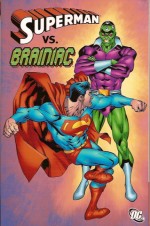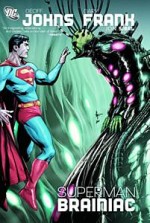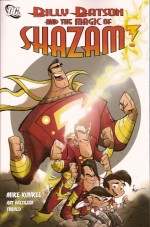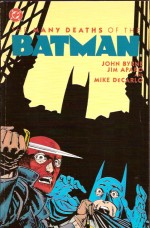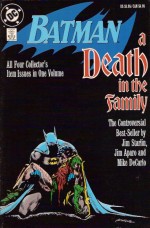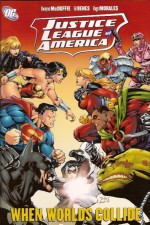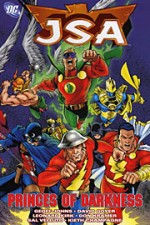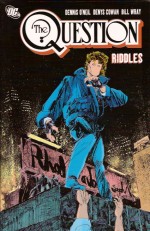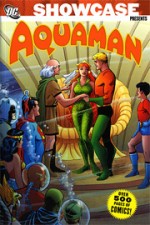
By Jack Miller, Bob Haney, Ramona Fradon, Nick Cardy & various (DC Comics)
ISBN: 978-1-4012-1712-9
Aquaman was one of the few superheroes to survive the collapse at the end of the Golden Age, a rather nondescript and generally bland looking guy who solved maritime crimes and mysteries when not rescuing fish and people from sub-sea disasters.
He was created by Mort Weisinger and Paul Norris in the wake of Timely Comics’ Sub-Mariner and debuted in More Fun Comics #73 (1941). Strictly a second stringer for most of his career he nevertheless continued on beyond many stronger features, illustrated by Norris, Louis Cazaneuve and Charles Paris, until young Ramona Fradon took over the art chores in 1954, by which time Aquaman had moved to a regular back-up slot in Adventure Comics. She was to draw every single adventure until 1960.
In 1956 Showcase #4 (See The Flash Archive Edition volume 1 or Showcase Presents the Flash volume 1) rekindled the public’s imagination and zest for costumed crime-fighters and, as well as re-imagining many departed Golden Age stalwarts, DC also updated and remade its isolated survivors, especially Green Arrow and Aquaman. Records are incomplete, sadly, so often we don’t know who wrote what, but after the initial revamp better records survive and this second collection of the King of the Seven Seas has far fewer creative credit conundrums.
Although now the star of his own title, Aquaman still appeared as a back-up feature in World’s Finest Comics until 1964 and this chronological compilation includes those tales (issues #130-133, 135, 137, 139), his Brave and the Bold team-up with Hawkman (# 51) and the contents of Aquaman #7-23, covering the period December 1962 to September-October 1965, a period that led directly into the King of the Seven Seas becoming one of DC’s earliest television stars as part of the animated Superman/Aquaman Hour of Adventure.
The major writers from those years were Jack Miller and Bob Haney and although some records are lost and a few later scripts remain unattributed, recognizing artists is far less troubling. The World’s Finest stories were Fradon’s last; captivatingly clean, economical lines bringing to unique life charming little adventure and mystery vignettes which always were and still are a joy to behold. Thereafter, apart from a memorable and brief return to co-create Metamorpho the Element Man, she left comics until 1972 to raise her daughter.
‘King of the Land Beasts’ (WFC #130, by Haney & Fradon) is a typically high-quality teaser about an alien Aquaman whilst ‘The Sea Beasts from Atlantis’ (Aquaman #7 by Miller & Nick Cardy) pitted the Sea Lord and Aqualad against hideous sub-sea monsters and a plot to overthrow the government of the lost city, abetted if not quite aided by the sea imp Quisp.
‘The Man Who Controlled Water’ (World’s Finest # 131, Miller & Fradon) saw the heroic pair tackle a scientist who could solidify liquids into fearsome weapons whilst in issue #8 of their own magazine, creators Miller and Cardy revealed ‘The Plot to Steal the Seas’ with the oceanic adventurers battling far out of their comfort zone to thwart marauding aliens.
Dave Wood scripted the quirky thriller ‘The Fish in the Iron Mask’ (WFC #132) wherein faithful octopus Topo was possessed by a sinister helmet and ‘The Secret Mission of King Neptune’ (Aquaman #9, Miller & Cardy) seemingly brought the heroes into bombastic contention with the God of the Oceans – but was he all he seemed?
World’s Finest #133 briefly introduced ‘Aquaman’s New Partner – Aqua-Girl’, but Miller and Fradon’s creation was strictly a one shot deal, whereas ‘War of the Water Sprites’ (Aquaman #10, Miller & Cardy) introduced an evil band of Quisp’s fellow imps who eerily presaged a tale of the JSA decades later…
‘The Creatures that Conquered Aquaman’ (from WFC #135, Miller & Fradon) was another alien invasion extravaganza whilst Aquaman #11 featured the landmark introduction of the Sea King’s future wife Mera in the Miller & Cardy extravaganza ‘The Doom from Dimension Aqua’, whilst #12 featured two shorter thrillers from Haney, ‘The Menace of the Land-Sea Beasts’ with mutated jungle animals wreaking sub-sea havoc and ‘The Cosmic Gladiators!’ wherein the seaborne sentinels are press-ganged into an intergalactic gladiatorial contest.
Miller provided the penultimate World’s Finest outing ‘The Day Aquaman Lost his Powers’ for #137 and Haney scripted a manic tale of team-up terror for superb veteran artist Howard Purcell in ‘Fury of the Exiled Creature’ (The Brave and the Bold #51, December 1963-January 1964) in which the fearsome Outcast of Atlantis turned mutative powers against not just Aquaman but also new DC superstars Hawkman and Hawkgirl.
Aquaman #13 then saw Mera return in the Miller-penned ‘Invasion of the Giant Reptiles’ as the tide-crossed lovers joined to defeat criminals from the future. Fradon and Miller ended the Sea King’s World’s Finest tenure in high style with the taut thriller ‘The Doom Hunters’ in #139, leaving Nick Cardy as sole Aquaman artist. His work slowly began to become more representational and realistic, although Miller’s ‘Aquaman’s Secret Powers!’ still held plenty of fantastic fantasy as a dying derelict cursed the Sea King with incredible new abilities, whilst the second tale in #14 ‘The Tyrant Ruler of Atlantis’ found the temporarily deranged hero seizing the throne of the sunken city. Within scant months he would be legitimately offered the crown…
Miller wrote the next four issues beginning with the sinister scientific tragedy ‘Menace of the Man-Fish’, #16’s ‘The Duel of the Sea Queens!’ as Mera battled an alien siren who had set her tentacled cap for Aquaman and #17’s ‘The Man who Vanquished Aquaman’ wherein the god Poseidon stole Mera.
All this romantic tension and concentration was for a purpose. The next issue, #18 featured ‘The Wife of Aquaman’ as the Sea King married his extra-dimensional beloved in one of the first superhero weddings of the Silver Age. Talk about instant responsibilities…
None of the remaining tales have a credited scripter, but that doesn’t affect their wonderful readability nor Cardy’s better-every-panel artwork, beginning with #19’s ‘Atlanteans For Sale’ wherein new bride Mera slowly went bonkers due to her husband’s neglectful super-heroing schedule. Cue the arrival of the merman man-candy Nikkor who insinuated himself into her affections… and the throne!
This surprisingly adult tale is followed by #20’s ‘The Sea King’s Double Doom’ as an old friend and a shape-changing monster both hit Atlantis at the same time. Coincidence? We think not…
Super-villain the Fisherman debuted in #21’s ‘The Fearful Freak from Atlantis’ as the Sea King became a sea monster, whilst ‘The Trap of the Sinister Sea Nymphs’ introduced Mera’s wicked twin sister. This splendidly engaging second volume ends on another groundbreaking high-note with issue #23’s ‘The Birth of Aquababy’ wherein the happy couple’s newborn child displays uncanny powers (and yes, you nit-picking gossips it was nine months later… exactly nine months).
One of the greatest advantages of these big value black-&-white compendiums is the opportunity they provide whilst chronologically collecting a character’s adventures to include crossovers and guest spots from other titles. When the star is as long-lived and incredibly peripatetic as DC’s King of the Seven Seas that’s an awful lot of extra appearances for a fan to find…
DC has a long and comforting history of gentle, innocuous yarn-spinning with quality artwork. Ramona Fradon’s Aquaman is one of the most neglected runs of such accessible material, and it’s a pleasure to discover just how readable they still are. And when the opportunity arises to compare her wonderful work to the exponentially improving superhero work of such a stellar talent as Nick Cardy this book becomes another fan’s must-have item. More so when all the stories are still suitable for kids of all ages, Why not treat yourself and your youngsters to a timeless dose of whimsy and adventure? You won’t regret it.
© 1962, 1963, 1964, 1965, 2008 DC Comics. All Rights Reserved.


